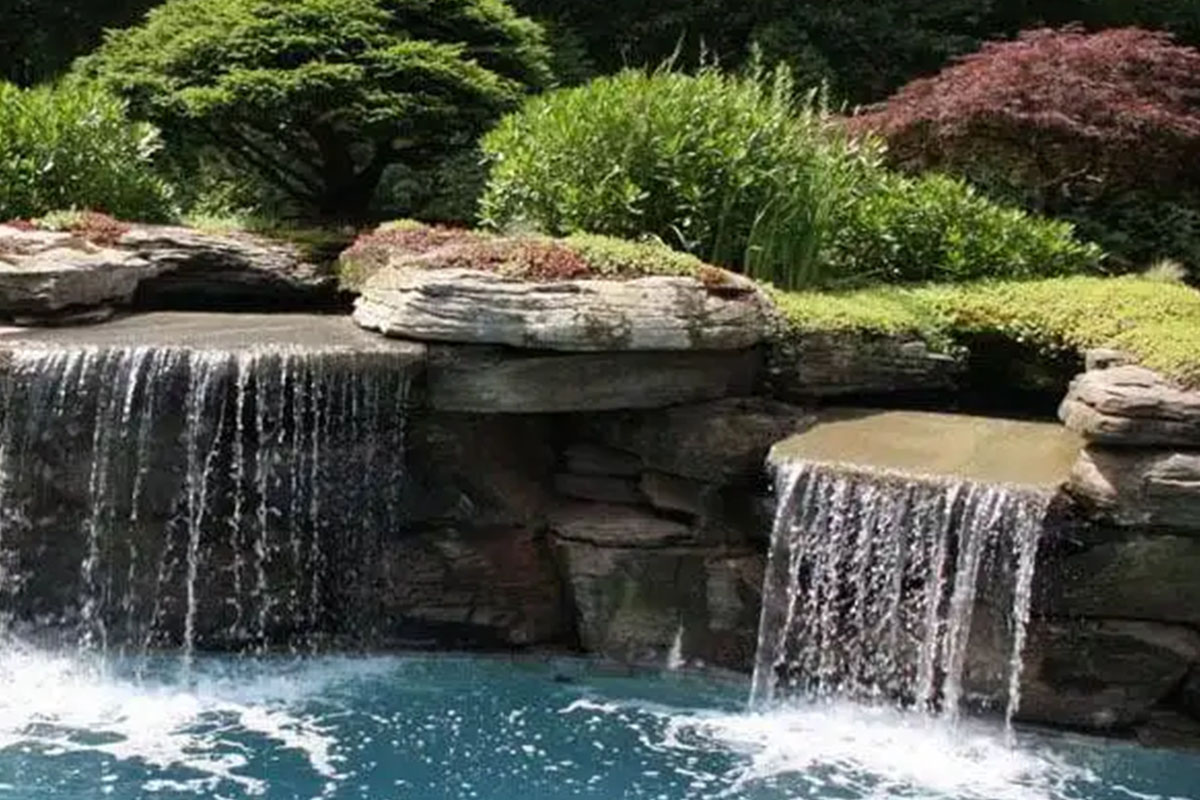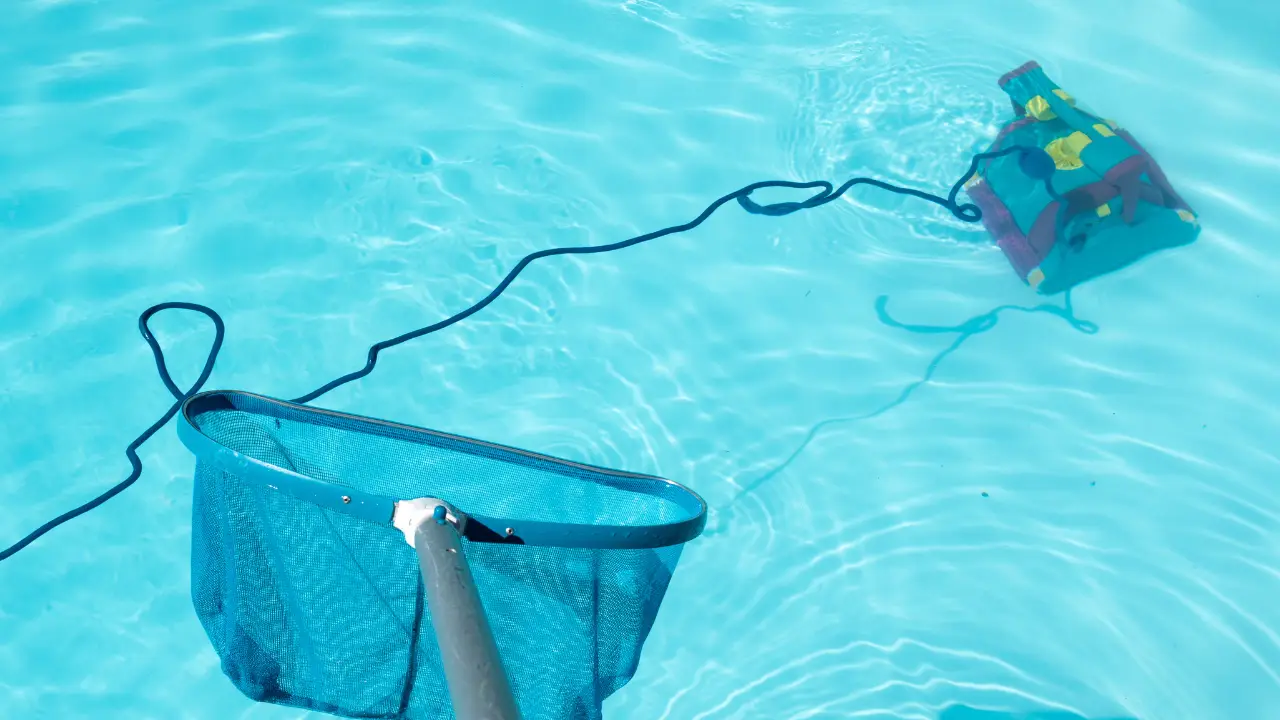Note from the Editor: Welcome to the Manning Pool Service Winterization blog. The below guide is a highly detailed, step-by-step tutorial, taking pool owners through the entire winterization process. If you are located in Texas, as many of our clients are, a complete winterization of your pool may not be necessary. Texas typically does not have periods of extended freezes. If the temperatures drop below 32° for a short period, it is recommended that you leave the equipment running 24 hours, with the pool automation’s “Freeze Protection” enabled. This will allow the water to continuously flow through the lines, preventing ice from building up.
If you have a new swimming pool, you’re likely asking yourself, “How do I winterize my pool?” Failing to winterize a swimming pool properly can lead to expensive damages. Before winter arrives, you need to winterize your pool for the season ahead. Winter pool service is one of the essential pool maintenance tasks you should complete.
What Pool Chemicals Do I Need to Winterize My Pool?

Use the following chemicals and supplies to winterize a swimming pool.
Testing kit
Before adding chemicals to your pool, you want to determine what elements are in it and what levels you need to balance. You’ll want a testing kit if you don’t already have one. Winterizing your pool requires measuring the alkalinity, pH levels, calcium, and chlorine to ensure they’re within range. You can use these levels to decide how many chemicals you need and in what order to use them.
Shock
Shock is a chemical that removes bacteria, algae, and other waste from your pool. Many homeowners may use a pool shock to clean a pool after heavy rain or a long period with minimal pool service. If you have a lot of waste in your pool, you’ll need to shock it according to the instructions in your manufacturer’s guidelines.
You also want to choose a shocking chemical that won’t affect the calcium hardness or pH levels. After adding chemicals, let the water circulate for a few hours before draining. Homeowners who have a pool and live in warmer weather may also need a mid-winter shock to keep bacteria levels low. Shocking chemicals don’t necessarily have to include chlorine, although many do. Specific types of chemicals use chlorine but still clean the pool water effectively.
Algaecide
Algaecide is a type of waste that comes from plants and soils and grows in your pool. It’s best to treat your pool for algae before winterizing it to prevent the algae from blooming or growing throughout the winter season. You’ll want to choose an algaecide that retards the type of algae that grows in your area. You also want to choose one that won’t stain the surfaces of your pool. Algae control typically requires one quart or 32 ounces of chemicals per 25,000 gallons of pool water.
Chlorine
Now is the best time to focus more on pool service appointments or chlorine applications. You may still need chlorine in your pool throughout the winter months, especially if you’re wondering, “How do I winterize my pool?” If you haven’t added chlorine in a while, you may want to wait until you do to begin winterizing your pool.
Typically, you want the free chlorine level in your pool to be between 2.0 to 4.0 parts per million (ppm). If the pool water’s pH is not currently in this range, add enough chlorine to reach it. Add the chlorine to the pool’s deep end when the pump is running for the best results. This application can also help to clean the filter in preparation for winterization.
Alkalinity Increaser
Alkalinity in the water dilutes the chlorine, preventing it from working. Ideally, you want the alkalinity level of your pool to be between 80 to 150 ppm. If the alkalinity is lower than this, you’ll need to add an alkalinity increaser chemical.
pH increaser
pH refers to the softness of your water. Ideally, the pH level should be between 7.2 and 7.6. If your pool water pH isn’t within this range, your pool water is too soft, and you’ll need to add chemicals to increase the pH levels.
Pool Flocculant
Calcium can build up in your pool and affect the surfaces. Hard water can lead to pool stains that can be difficult to remove. You want the water hardness level in your pool to be between 175 and 275 ppm. If hardness levels are lower than this range, you’ll want to add a chemical that increases the water hardness. You may be able to use a stain and scale pill or MetalFree product to remove stains and scales.
Phosphate Controller
 A phosphate controller helps control phosphates from building up in the pool when winterized. Pool Magic + PHOSfree is a suitable phosphate controller that goes a long way. You can use a traditional 1.0-liter bottle to treat up to 25,000 gallons of water.
A phosphate controller helps control phosphates from building up in the pool when winterized. Pool Magic + PHOSfree is a suitable phosphate controller that goes a long way. You can use a traditional 1.0-liter bottle to treat up to 25,000 gallons of water.
Pool Antifreeze
If you live in an area with freezing temperatures, you’ll also need to winterize the plumbing systems. Add non-toxic pool antifreeze to all pool lines. You’ll need to seal the skipper pipe to prevent them from freezing as you winterize my pool.
Chemical Kit
You may be able to find a chemical kit that includes all the chemicals you need for winterization. These kits often come with slow-release floaters that help you better control your levels in the pool. You can also place the slow-floaters in the pool throughout the winter, where they can regularly control bacteria levels. Of course, make sure you always choose a chemical kit with chemicals that meet your pool’s needs.
You may also find a pool closing kit, including many of the chemicals and tools you need to close your pool. This kit takes the guesswork out of the question, “how do I winterize my pool?”
You’ll need enough pool chemicals to distribute throughout the pool evenly. You may need more of one chemical than another if your levels don’t move as fast as others. It’s also best to avoid adding all of the chemicals at once.
Additional Tools to Winterize a Pool
Chemicals aren’t the only items you’ll need to winterize my pool. If you’re asking, “What tools do I need to winterize my pool,” study our list below to help you get started.
Pool brush
You’ll want to give your pool walls a good scrub before winterizing or adding chemicals. A pool brush moves algae and bacteria from the pool walls to the water, where you can then treat them with chemicals.
Pool skimmer (net + pole)
A good pool skimmer can help you remove exterior debris from the pool before adding chemicals. Remove all debris from the water, including leaves, bugs, or dirt.
Pool cover
A pool cover is a must when winterizing your pool. You want a pool cover that fits the specific dimensions of your pool. In-ground pools may require a custom-made pool cover to ensure it works correctly. Some people may also choose to use an air pillow. You can tie your floating chlorinator to the pillow for an even flow of chlorine between pool services.
Air compressor
You may need to clean out your pool lines when winterizing. You can use an air compressor to blow out the different components of the pool.
Underwater Pump
While you may not have to remove all of the pool from your swimming pool for winterization, you will likely have to reduce the water levels. Using an underwater pump, you can lower the water levels. Ideally, you want the water level to be about 18 inches below the pool’s tile line.
Anyone who lives in an area with winter weather that goes below 65 degrees regularly needs to winterize their pool. However, even people who live in sunnier areas, such as Houston, may still need to winterize. While this process may look different if you live in the southern states, you still want to install air pillows and a winter cover to protect your pool.
When to Winterize a Pool
Are you asking yourself, “When should I winterize my pool?” You may want to squeeze a few more pool days out of your pool in hopes of warmer weather during the early fall months. However, it’s best to begin the process of winterization as soon as temperatures consistently drop below 65 degrees Fahrenheit
Last February, Houston experienced sudden freezing temperatures that wreaked havoc on pool equipment and caught many homeowners off guard.
- Keep your pool water circulating. Run the equipment 24/7! A few days of high electricity bills is better than repairing a new equipment pad.
- Wrap your pipes! Use blankets, towels, or pipe insulation.
- You may run your heater if you have one. This is optional. Please turn the heater OFF at the unit if you expect power loss.
- Disable the pool cleaner. Store the cleaner out of the pool, if possible.
- Do not attempt to start your own chapter of the Polar Bear Club with your neighbors. Swimming in water under 70° is dangerous and highly frowned upon in Texas
Some homeowners may wonder if they can winterize their pools early if they don’t plan on using them for the rest of the year. While it’s possible to begin the winterization process early, you will likely have to deal with a few additional concerns if you do. Warmer weather can lead
to algae growth, meaning you may need more chemicals to control it. You’ll need to open your pool at the right time rather than waiting until the middle of the summer months to start using your pool for the season. Anyone who owns a swimming pool is familiar with the ongoing required maintenance and upkeep. Correct winterization is one of the essential tasks of owning a pool. Pool services in Houston can help you ensure that you use the right pool chemicals and that your pool is protected long into the winter months. Find out how the professionals from Manning Pool Service can help you take care of your swimming pool so that you don’t have to ask yourself, “How do I winterize my pool?”
What Pool Chemicals Do I Need to Winterize My Swimming Pool? | Manning Pool Service – Houston, TX




